
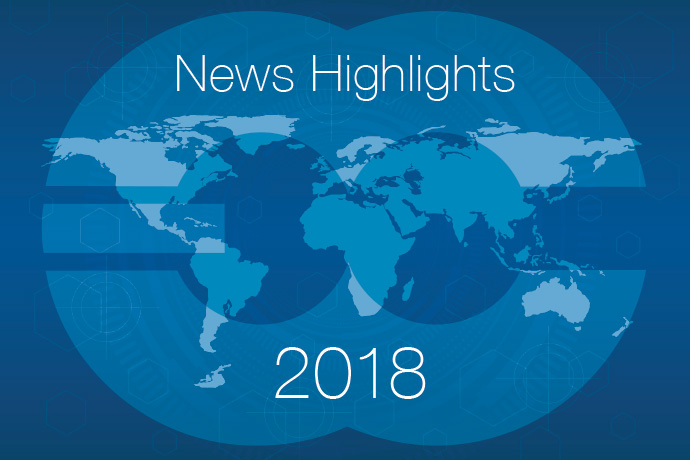
The year 2018 was rich in developments across ECMWF’s activities in operational forecasting; research and development; implementing two Copernicus services; and supercomputing.
Highlights include a major upgrade of the Integrated Forecasting System (IFS); the Annual Seminar on progress and challenges in Earth system data assimilation; the launch of the Climate Data Store; and the release of an invitation to tender for ECMWF’s next high-performance computing facility.
Operational developments
A wide-ranging upgrade of the IFS, implemented on 5 June 2018, brought better global weather forecasts, with particularly consistent gains in the extended range.
New products introduced in IFS Cycle 45r1 include forecasts of lightning flash density.
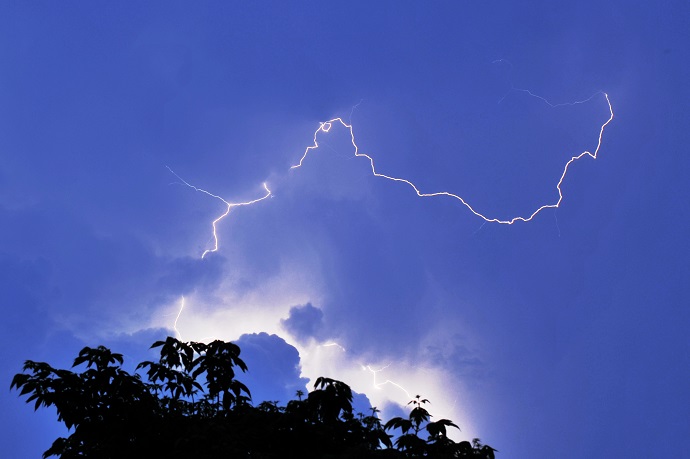
Lightning is impressive to behold but can pose multiple hazards. (Photo: Evgeniy1/iStock/Thinkstock)
A key plank of the upgrade was enhanced dynamic coupling between the ocean, sea ice and the atmosphere. For example, high-resolution forecasts can now reflect rapid changes in sea ice concentration.

The 6-day high-resolution forecast for 24 February 2018 using the coupled model (left) captured a wind-driven opening in the sea ice cover near Cape Morris Jesup in northeast Greenland (right). Wind arrows show the preceding 24-hour mean 10 m wind field. (Satellite image: European Space Agency via the Danish Meteorological Institute)
The Using ECMWF’s Forecasts (UEF) meeting from 5 to 8 June provided a timely opportunity to update participants on the changes.
The theme of the event was that ‘the only limit is your imagination’ when turning weather data into useful information.

Participants in the UEF 2018 meeting were able to test the use of virtual reality to visualise weather data.
A new, online edition of ECMWF’s user guide was published in May, providing all the tools needed for the correct use and interpretation of ECMWF products.
In June, ECMWF launched a product that makes it possible to visualise atmospheric conditions from the ground up to the lower stratosphere anywhere in the world.
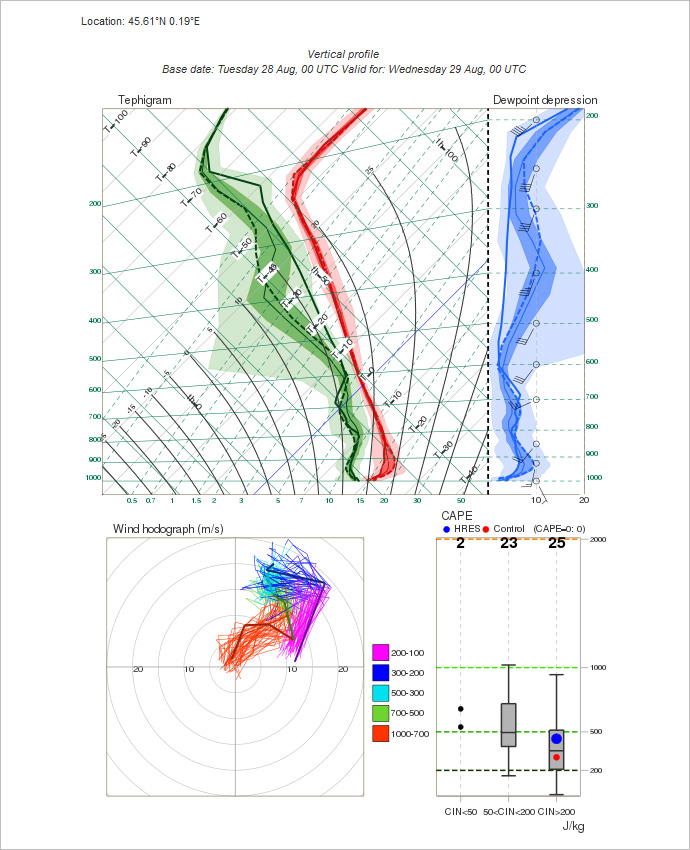
Forecasts of atmospheric vertical profiles can assist with many forecasting challenges, such as predicting cloud layers, layers of instability and precipitation type.
Driving forward weather science
The first half of 2017 saw a series of major international weather science workshops at ECMWF, including on ocean observations, radiation in forecast models, and physics–dynamics coupling.
More than 50 ocean and data assimilation experts came together at ECMWF from 22 to 25 January to discuss the way forward for the use of observations of sea-surface temperature and sea ice in numerical weather prediction and climate applications.
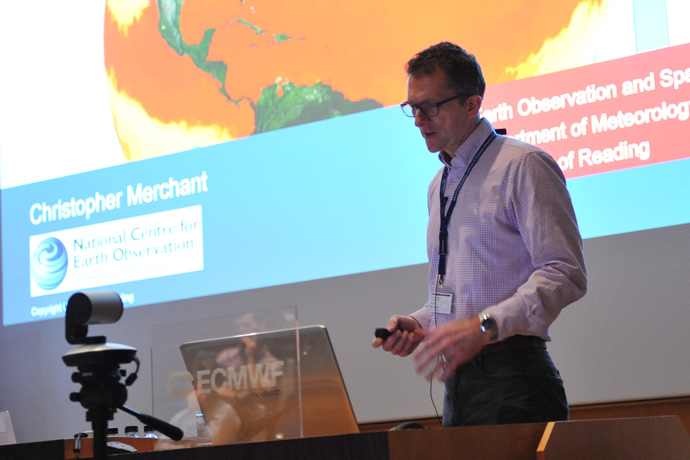
Chris Merchant from the University of Reading gave a talk on ‘Quantifying the thermodynamic state of the global ocean surface’.
The third Physics–Dynamics Coupling workshop (PDC18) from 10 to 12 July brought together more than 50 weather and climate scientists, who looked into better ways to couple small-scale physical processes and large-scale atmospheric dynamics in Earth system models.
International Women’s Day on 8 March was a good opportunity to celebrate the achievements of some of the women working in weather science at ECMWF.


Dr Louise Nuijens (TU Delft), Prof. Marc Bocquet (École des Ponts ParisTech) and Dr Maria-Helena Ramos (Irstea) begin their three-year Fellowship terms on 1 January 2019.
In September, 19 speakers presented progress and challenges in Earth system data assimilation at ECMWF’s Annual Seminar from 10 to 13 September 2018. More than a hundred participants attended this flagship event in ECMWF’s calendar.
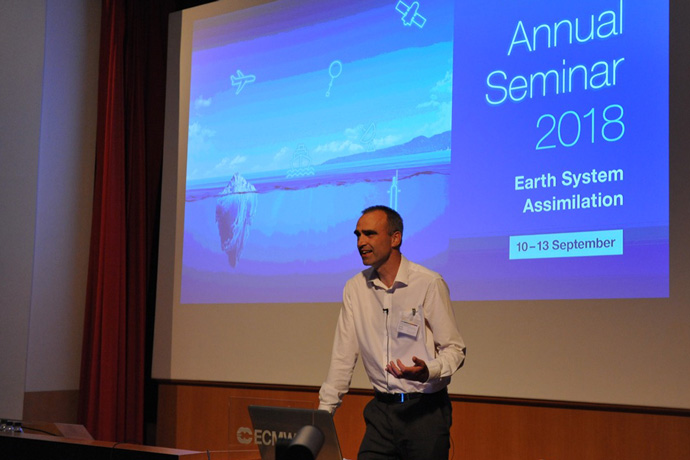
In his welcome address, Director of Research Andy Brown noted that exciting developments in data assimilation are under way at leading numerical weather prediction centres.
Copernicus developments
On 14 June, the EU-funded Copernicus Climate Change Service (C3S) implemented by ECMWF launched Europe’s Climate Data Store (CDS), a one-stop shop for past, present and future climate information.
The CDS greatly improves access to climate data and tools, is open and free for all to use.
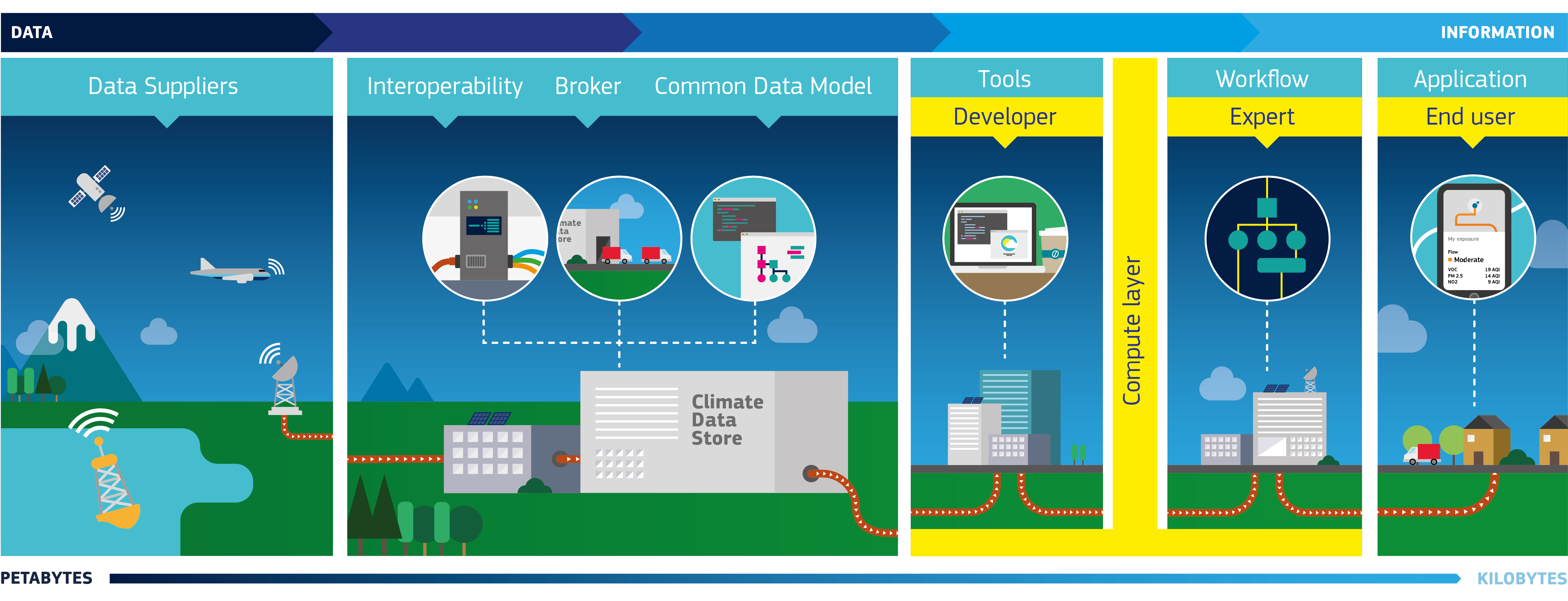
The CDS includes tools that enable climate data to be transformed into information relevant to different sets of users.
Two months earlier, C3S and the Copernicus Atmosphere Monitoring Service (CAMS), which is also implemented by ECMWF, released a European State of the Climate 2017 report.
One of the findings was that in the European sector of the Arctic, sea ice cover was much lower than average during the first three months of the year.

Sea ice cover for January 2017, the month with the year’s largest anomaly in the European sector of the Arctic, and for July 2017, the month with the smallest anomaly. The pink line denotes the 1981–2010 average sea ice edge for the month. (Charts: ECMWF Copernicus Climate Change Service)
Data released by C3S at the start of the year showed that 2017 was the third in a row of exceptionally warm years.
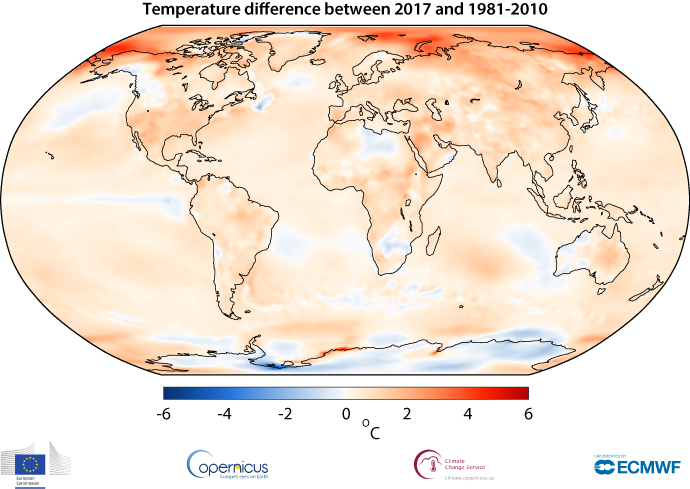
Air temperature at a height of two metres for 2017, shown relative to its 1981–2010 average. (Source: Copernicus Climate Change Service, ECMWF)
Still on the Copernicus front, in September CAMS released its new global reanalysis of atmospheric composition for the period 2003–2016.
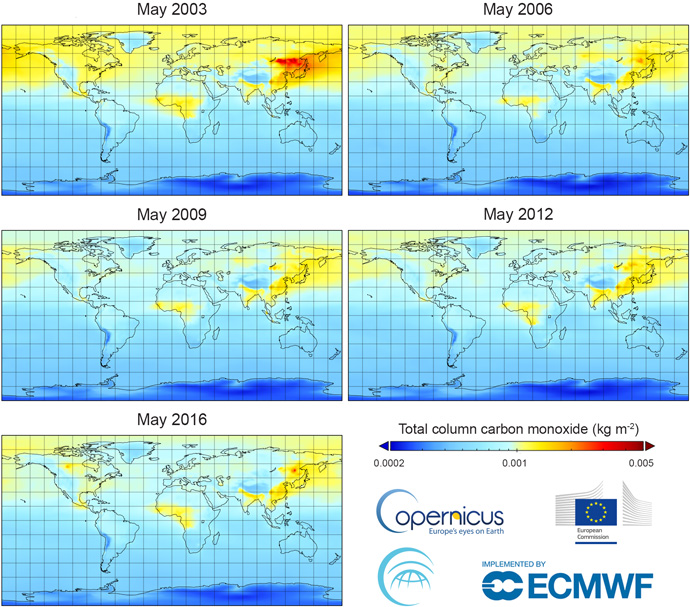
CAMS global reanalysis for carbon monoxide averaged over the month of May for five different years between 2003 and 2016. (Image: Copernicus Atmosphere Monitoring Service, ECMWF)
Computing developments
In June, ECMWF appointed Dr Martin Palkovič as ECMWF’s next Director of Computing from 1 October 2018. He succeeds Prof. Adrian Wander, who will step down after a transition period to ensure a seamless handover.
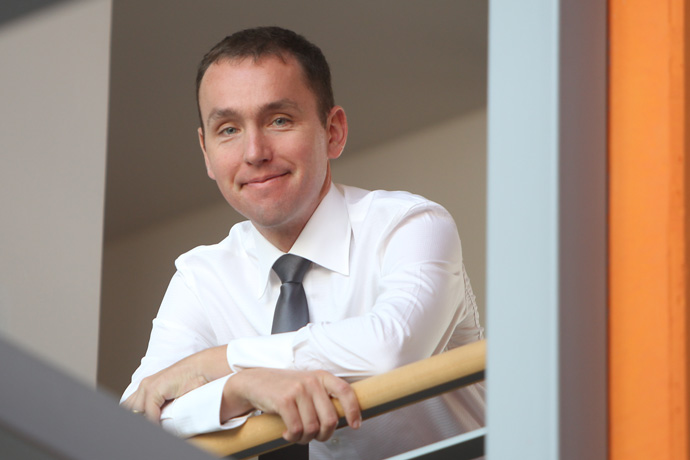
Dr Palkovič was previously the Vice President of Engineering at Codasip Ltd in Brno, Czech Republic, where he was responsible for the management of R&D as well as collaboration with academic communities and national and EU representatives. (Photo: Sznapka Petr)
In other developments, Python experts from across the world came together at ECMWF on 30 and 31 October 2018 to review progress in developing Python frameworks for Earth system sciences.
After intensive testing, ECMWF’s new Meteorological Interpolation and Regridding (MIR) software package was declared ready for operations.
Also in October, the ESCAPE-2 project on energy-efficient scalable algorithms for weather and climate prediction at the exascale was formally launched with a kick-off meeting at ECMWF.
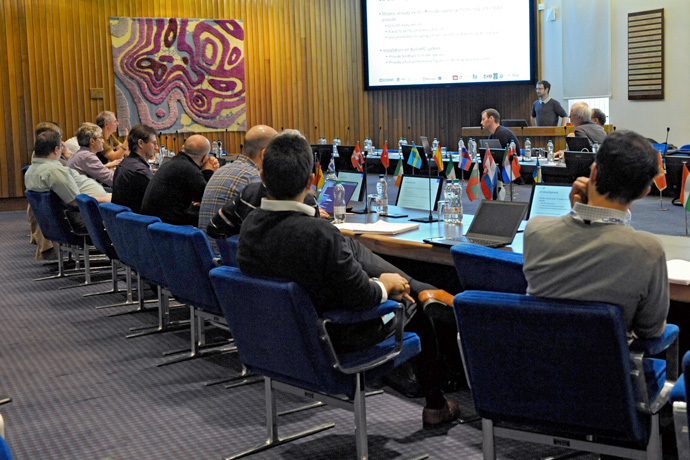
The ESCAPE-2 kick-off meeting brought together 30 experts on computing, numerical weather prediction (NWP) and climate.
Finally, the process of moving ECMWF’s data centre to Bologna, Italy, entered a new phase with the release of an invitation to tender for ECMWF’s next high-performance computing facility (HPCF) on 12 November 2018.

Artist’s impression of ECMWF’s next data centre at the Tecnopolo di Bologna. (Image: gmp von Gerkan, Marg & Partner)
